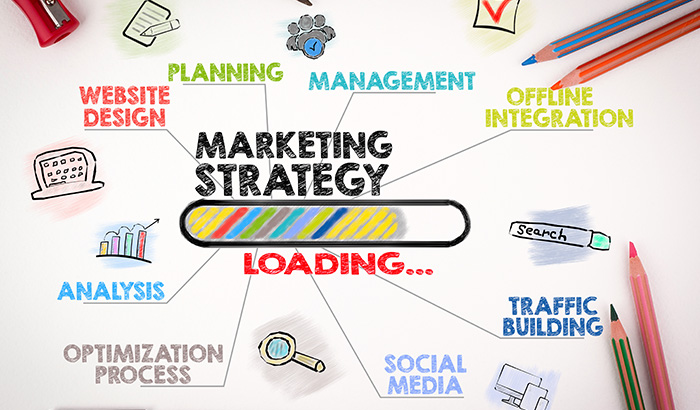Transparency is the bedrock of trust-building in the relationships between brands and consumers. It’s the difference between a potential or one-time customer and a loyal, returning customer passionate about your products or services. Sharing authentic information about your brand, products, and practices fosters authenticity in every interaction.
In today’s fiercely competitive marketplace, trust is the currency that sets successful brands apart. When consumers trust a brand, they become more than passive buyers. Instead, they’re active participants who are eager to engage, purchase, and advocate for the brand they believe in. That’s why nurturing trust should be at the forefront of every brand’s long-term marketing strategy for success.
In this blog, we’re diving deep into the world of transparency in brand marketing, exploring its profound impact on consumer trust. We’ll uncover what transparency truly means, why it’s more vital than ever in today’s marketing landscape, and actionable strategies for infusing transparency into your marketing endeavors.
Get ready to unlock the secrets to cultivating enduring trust and loyalty through the power of transparency.
The concept of transparency in brand marketing

Consider the relationships that hold the most significance in your life. Those connections are likely rooted in trust and transparency, qualities that may not be as pronounced in other relationships.
Transparency in brand communication mirrors the authenticity and honesty we value in personal connections. It involves openly sharing information about your brand, products, and business practices with your audience. This transparency fosters trust and credibility, which are essential elements for building lasting relationships with your customers.
When you’re transparent, you’re not hiding anything or trying to deceive your customers. Instead, you’re building trust by providing clear, accurate information they can count on and use for future purchases.
There are many ways brands demonstrate transparency in their marketing practices. For example, successful brands openly share information about their manufacturing processes, ingredients used in their products, or their environmental and social impact. They are also transparent about pricing, promotions, and any potential risks or side effects associated with their products.
Transparency offers a multitude of benefits for both brands and consumers.
For brands, transparency demonstrates credibility and trustworthiness in an increasingly skeptical market. By openly sharing information about their products, practices, and values, brands establish themselves as authentic and reliable entities in the eyes of consumers. This credibility fosters customer loyalty, encourages repeat business, and invites positive word-of-mouth referrals.
Transparent brands often enjoy a competitive edge, as their openness distinguishes them from less forthcoming competitors. This provides transparent brands and businesses with a unique appeal in the market.
On the consumer side, transparency brings invaluable peace of mind and confidence. When brands are upfront about their processes, ingredients, and ethical standards, consumers feel reassured about the integrity of their purchases. This transparency empowers consumers to make informed decisions aligned with their values, leading to a deeper connection with the brand.
Transparency is a win-win proposition for brands and consumers alike. By embracing openness and honesty in their communication, brands will cultivate stronger relationships with their audience, driving engagement, loyalty, and sustainable growth.
Trust-building strategies
In the realm of trust-building, open communication and honesty reign supreme. Each interaction with your brand is like a conversation; brands need to engage in transparent conversations with their audience by providing forthright and genuine insights into your products, services, and overall business ethos.
This transparent approach cultivates a sense of trust and reliability among consumers, who greatly appreciate candid and sincere brands in their interactions. The tone, emotions, or approaches a brand uses can make or break a sale, regardless of the product or service.
Authenticity and consistency in messaging are key pillars in the trust-building process. Brands should strive to communicate their unique identity and values consistently across all touchpoints to ensure that their messaging remains true to their brand essence.
But consistency alone is not enough. It’s as important for a successful brand to maintain authenticity. When your brand stays true to its values, beliefs, and identity, it resonates with your audience on a deeper level. It breeds more authenticity from customers, as consumers are more likely to engage with brands that they perceive as genuine and sincere.
When consumers feel a genuine connection with your brand, they are more likely to remain loyal over the long term, advocating for your brand and becoming brand ambassadors themselves. Authenticity builds brand resilience that helps your brand weather challenges and setbacks while maintaining its integrity and trustworthiness in the eyes of consumers.
Ultimately, authenticity is not a mere marketing strategy; it’s a mindset that permeates every aspect of your brand’s identity and communication. Staying authentic and consistent is one of the best ways your brand will forge deeper and longer-lasting connections with your audience and establish a sense of genuine rapport.
Accountability and responsibility play a crucial role in fostering trust. Brands must take ownership of their actions and decisions, readily admitting any missteps and proactively addressing them. Brands that demonstrate accountability and a commitment to rectifying mistakes showcase their dedication to maintaining the trust and confidence of their customers.
These trust-building strategies hinge on open, honest communication, unwavering authenticity, and a steadfast commitment to accountability. By embracing these principles in their marketing endeavors, your brand will lay a solid foundation of trust with your audience and nurture lasting relationships built on mutual respect and transparency.
The impact of transparency on consumer behavior

When brands are open and honest about their practices, products, and values, it creates a strong foundation of trust that encourages customers to remain loyal and advocate for the brand to others.
Ultimately, transparency contributes to a brand’s reputation and credibility. By consistently delivering on their promises and being transparent about their operations, brands build a positive reputation in the eyes of consumers and stakeholders. This, in turn, enhances their credibility and solidifies their standing in the marketplace.
In today’s information-driven age, consumers are increasingly drawn to brands that are transparent about their ingredients, sourcing practices, and ethical standards. When consumers have access to transparent information, they feel empowered to make informed decisions that align with their values and preferences.
When it comes to implementing transparency in your brand marketing, there are several steps you can take to foster openness and trust with your audience.
Start by prioritizing honesty and openness in your communication with customers. Be completely transparent about your company values, mission, and practices. This means providing clear and accurate information about your products or services and openly addressing any issues or challenges your brand may face.
The next step is to ensure consistency in your messaging across all channels. Consistency builds trust and credibility, so ensure your brand’s messaging aligns with its actions. This includes being transparent about your pricing, policies, and processes, and avoiding misleading or deceptive marketing tactics.
Consider leveraging tools and resources to maintain transparency in your marketing efforts. For example, use social media monitoring tools to track conversations about your brand and respond promptly to customer inquiries or feedback. Similarly, customer feedback platforms might provide valuable insights into your audience’s perceptions and preferences, helping you identify areas where you can improve transparency.
Finally, be proactive in addressing challenges and overcoming obstacles to transparency. This may involve conducting regular audits of your marketing materials to ensure accuracy and compliance with regulations or implementing internal processes to ensure all employees align with your brand’s transparency goals.
By following these steps and leveraging the right tools and resources, you can effectively integrate transparency into your brand marketing strategy, building stronger relationships with your audience and fostering greater trust and loyalty over time.
Future trends and considerations
As we look ahead to the future and trajectory of transparent marketing, it becomes even more important to discern the emerging trends and navigate the evolving terrain of consumer expectations. With rapid technological advancements and shifting societal norms, the landscape of brand-consumer interactions is continually evolving.
As such, staying attuned to emerging trends and consumer sentiments is crucial for brands to remain relevant and trustworthy in the eyes of their audience. By anticipating future developments and proactively adapting their strategies, brands position themselves as leaders in transparent marketing, fostering deeper connections and enduring customer loyalty.
Sustainability and social responsibility
There is an increasing emphasis on sustainability and social responsibility. Consumers are becoming more conscious of the environmental and social impact of the brands they support, and they expect companies to be transparent about their efforts in these areas.
Brands that prioritize sustainability and social responsibility and are transparent about their practices are likely to resonate more with consumers and gain a competitive edge in the market.
Technology
Advancements in data analytics, blockchain technology, and artificial intelligence are making it easier for brands to track and trace their products throughout the supply chain, ensuring greater transparency and accountability.
Technological innovations such as augmented and virtual reality enable brands to provide immersive experiences that give consumers a behind-the-scenes look at their operations and processes.
Ethics and expectations
Ethical considerations and evolving consumer expectations also shape the future of brand marketing transparency. As consumers become more informed and empowered, brands demand greater transparency across all aspects of their operations.
This includes transparency about sourcing and manufacturing practices, ingredient lists, and data privacy policies. Brands that fail to meet these expectations risk losing trust and credibility with their audience, which has significant repercussions for their reputation and bottom line.
The future of transparency in brand marketing is promising but also presents challenges and considerations. By staying informed about emerging trends, embracing technology, and prioritizing ethical practices, brands will build stronger relationships with their audience and position themselves for long-term success in the evolving marketplace.
5 ways to practice transparency in brand marketing
Now, it’s time to make a game plan for how your brand will incorporate and improve transparency across your entire business. Here are five specific ways to get started.
- Open communication channels: Encourage open dialogue between your brand and consumers through various channels such as social media, email, and customer service hotlines. Respond promptly to inquiries, feedback, and concerns to demonstrate your commitment to transparency.
- Authentic storytelling: Share authentic stories about your brand’s journey, values, and behind-the-scenes processes. Highlighting the people and principles that drive your brand fosters a sense of authenticity and builds trust with your audience.
- Honest product information: Provide detailed, accurate information about your products or services, including ingredients, sourcing, manufacturing processes, and pricing. Transparency in product information helps customers make informed purchasing decisions and reinforces trust in your brand.
- Financial disclosure: Be transparent about your company’s financial performance, including revenue, expenses, and profit margins. Publishing financial reports or statements on your website demonstrates accountability and integrity, enhancing credibility with stakeholders.
- Ethical business practices: Operate your business ethically and responsibly, adhering to industry regulations and standards. Be transparent about your commitment to sustainability, diversity, and social responsibility initiatives, demonstrating your brand’s values and integrity to consumers.
By embracing transparency, brands can build trust, foster loyalty, and differentiate themselves in a crowded marketplace.
Revity is ready to help your brand become even better!
As you navigate the complexities of transparent marketing, remember that you don’t have to go it alone. Revity Marketing Agency stands ready to partner with you on this journey, offering a wealth of expertise and innovative strategies to help you authentically connect with your audience. With our tailored solutions and unwavering commitment to transparency, we are ready to help elevate your brand to new heights of success. Contact Revity today to get started.
































